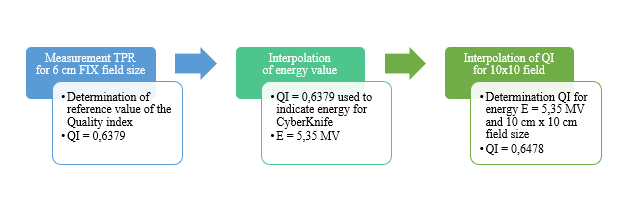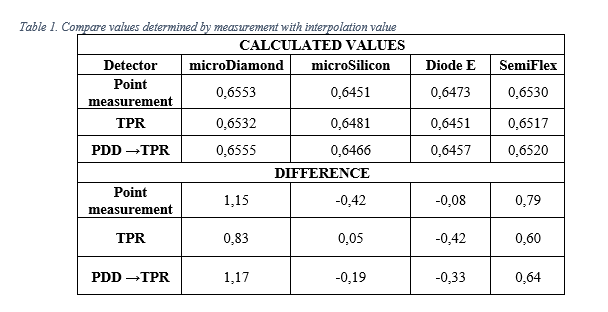Compare different types of radiation detectors used to determine the Quality Index on CyberKnife
Katarzyna Świątek,
Poland
PO-1761
Abstract
Compare different types of radiation detectors used to determine the Quality Index on CyberKnife
Authors: Katarzyna Świątek1, Krzysztof Matuszewski2, Maksymilian Wosicki2, Bartosz Pawałowski2
1Greater Poland Cancer Centre, Medical Physics , Poznań, Poland; 2Greater Poland Cancer Centre, Medical Physics, Poznań, Poland
Show Affiliations
Hide Affiliations
Purpose or Objective
Stereotactic radiotherapy is a type of cancer treatment that uses small fields with a high dose per fraction. The realization of that type of treatment is possible with the use of the dedicated accelerators. One of these types of an accelerator is CyberKnife (Accuray Incorporated, Sunnyvale, USA). Because of generating small field beams, these accelerators require a dedicated methodology of commissioning and dose measurements before patients treatment. This work shows the difference between measurement of quality energy for four radiation detectors.
Material and Methods
The quality index of CyberKnife 6 MV FFF photon beam was determined from the continues tissue phantom ratio measurement, percentage depth dose curves and by using two point dose measurement at depths 200 mm and 100 mm (SDD=100cm) and then dividing these values. Those measurements were performed for InCISE (MLC) collimator. First, it was essential to measure reference value of the Quality Index (QI) from TPR for field 6 cm FIX collimator (machine specific reference field for CyberKnife) which correspond to 6,75 cm x 6,75 cm square field at 100 cm. The reference value was determined by using microDiamond detector and all steps to determine those values shown on Graph 1. The calculated QI index was used to interpolate the energy value for this accelerator, which energy was used to the determined quality index for field 10 x 10 cm with use reference values from British Journal of Radiology (BJR) supplement 25. In the next step, the Quality Index was determined by all existing methods and four different detectors – microDiamond, microSilicon, Diode E, and SemiFlex (PTW Freiburg, Germany). Obtained values were correlated with values obtained from interpolation for field 10 cm x 10 cm and energy value.

Results
The differences between measured and interpolated values of QI was presented in Table 1. The reference Quality Index value achieved for 6 cm diameter FIX was 0,6478. Reading from microSilicon measurement was the closest to the calculated Quality Index for energy on this accelerator.

Conclusion
The smallest difference between measured and interpolated values were was obtained for diodes – microSilicon and Diode E. This detector shows the smallest differences for all methods of determination of the Quality Index. Difference for microDiamond and SemiFlex was similar. Moreover there where very small differences between used method for detector.